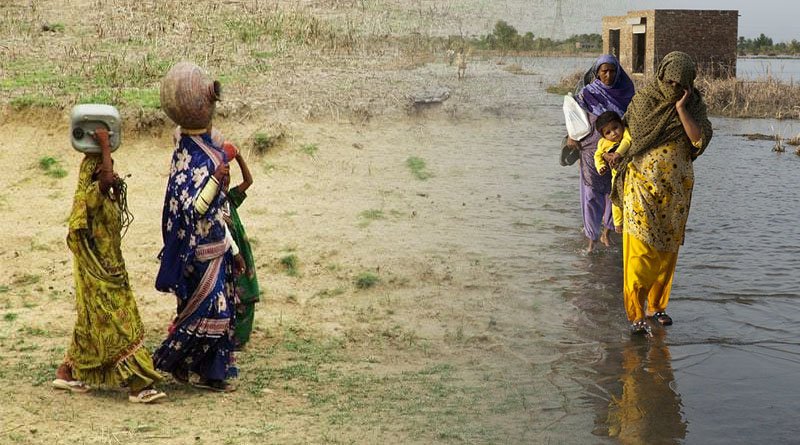The researchers found that while climate change has only slightly affected rainfall, increased heat has forced more evaporation from plants and soils, drying them out.

Millions of people have been forced into famine or famine-like conditions by the drought, and millions of animals have also perished. Group of scientists stated that a severe drought in East Africa that has caused tens of millions of people and animals to go hungry could not have occurred without the influence of human-caused climate change.
According to a report released on Thursday by World Weather Attribution, which quickly gathers scientists to assess the influence of climate change on extreme weather events, the drought is now 100 times more likely as a result of climate change. The 19 scientists concurred that another drought was likely to occur within the upcoming ten years.
Climate change has made this drought in East Africa exceptional, according to the report’s co-author and climate scientist Joyce Kimutai, a Kenyan expert in attribution.
The researchers found that while climate change has only slightly affected rainfall, increased heat has forced more evaporation from plants and soils, drying them out. The scientists claim that without climate change, this drying effect would not have happened.
Since the autumn of 2020, Horn of Africa in the East Africa, which comprises Kenya, Somalia, and Ethiopia, has experienced drought conditions. A portion of these nations, which typically experience two rainy seasons per year, have gone five seasons with little to no rain.
The “long rains,” which typically last from March to May, have become drier due to climate change, while the “short rains,” which typically last from October to December, have become wetter. The short rains also failed because La Nia, another weather phenomenon, obscured these wetter conditions.
According to the researchers, millions of animals have perished and at least 20 million people now experience acute food insecurity, though some estimates place this number closer to 100 million. To escape famine and famine-like conditions, tens of thousands of people fled to Kenyan refugee camps from Somalia and Ethiopia.
However, the researchers emphasised that calling the situation in the region a “climate-induced famine” would be inaccurate because famine is a complex phenomenon that is frequently fueled by conflict, political unrest, or inadequate government safety nets.
Food insecurity and famine are, in large part, driven by vulnerability and exposure rather than just a weather event, according to Friederike E. L Otto, a climate scientist at Imperial College London and one of the report’s authors.
A drought’s potential to develop into a disaster is influenced by a wide range of additional factors. In order to comprehend the effects of climate change on the drought, the researchers used peer-reviewed methodologies to compare the climate today with the climate before the late 1800s. They looked at computer models and weather data.
Otto pointed out that although the report itself hasn’t been peer-reviewed, it probably will. The United Nations Food and Agriculture Organization, the World Food Program, and a network of early warning systems released a relatively uncommon “joint alert” in 2021 and 2022 stating that climate change was the main cause of the drought in the area. Humanitarian organisations referred to the famine that occurred in Madagascar in 2021 during a drought as the world’s first “climate-induced famine.”
Scientists from World Weather Attribution quickly clarified the statement, claiming it was incorrect to attribute the drought in that region to human-caused climate change. According to some scientists, World Weather Attribution was inaccurate and climate change was indeed a factor.
ICN offers free and sponsored coverage of the climate that has won awards. We are supported by contributions from readers like you. The term “famine” has not been used by nations or governments to excuse inadequate or ineffective responses to a developing humanitarian catastrophe.
Therefore, the United Nations uses a scale known as the Integrated Food Security Phase Classification (IPC) to describe the degree of food insecurity and the circumstances that qualify as a famine in an effort to provide impartial guidance. The classifications are determined by a review committee.
In light of last year’s decision by nations at the yearly U.N. climate negotiations to create a “loss and damage” fund to compensate low-emitting countries for climate change impacts, linking a famine to climate change complicates the situation. If famines are proven to be caused by climate change, wealthy nations may be required to pay compensation to the famine-affected nations out of the fund.
The researchers reported that early warning systems, which take into account a complicated confluence of factors that could cause a famine, have significantly advanced.
They claimed that the issue was that these weaker nations lacked the resources necessary to address food crises. According to Cheikh Kane of the Red Cross Red Crescent Climate Center, “We’re still lacking a kind of link between these early warning systems and the response side.”
